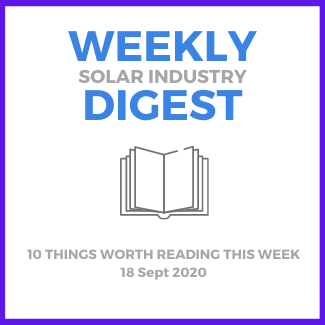GTM took a detailed look at the potential impact of the election on solar, energy storage and the broader power industry. Regardless of the results, renewables will thrive but the specific impact on batteries, solar and utilities will vary. Check out the article for the deep dive.
7000+ US schools, or 5.5% of K-12 schools, have gone solar to cut their second largest expense. This is up about 24% since 2017 and 81% since 2014. 79% of these are through third-party ownership. Unsurprisingly, CA leads all states of all solar powered schools.
To close a res energy storage sale highlight the economic payback of solar+storage, the security provided by storage in the face of blackouts, fires and utility rate increases, and storage’s ability to homeowners choose how/when to use power via a simple interface.
Heavier and larger next-gen panels mean changes or even restrictions in shipping and distribution, changes to design for the larger C&I projects, and more workers on construction sites, among other things.
How to accelerate clean energy innovation? Reforms that make it bigger (more fed spending), better targeted (to neediest renewable tech pillars), broader (R&D all the way to market maturity), more stable (stop boom and bust cycles), and more equitable (like a focus on justice).
To ensure early detection of dangerous thermal runaway conditions with C&I scale battery energy storage systems invest in a failsafe: a Li-ion Tamer sensor that acts as a network of sensors to search for the gas that is emitted from Li-ion batteries.
Duke Energy/Carolinas DER advocates settlement could transform rooftop solar and help end nationwide regulatory disputes. It pairs rooftop solar with smart DER devices and time-varying rate designs so as to up DE’s utility’s demand response capability and push customers to help address DE’s peak demand challenges.
Some 2020 trends in utility regulation so far: everything’s seen through the COVID lens, there’s innovation in the utility biz-model, NH and NY are eyeballing statewide data platforms, coal plant self-scheduling is under scrutiny, and the fed and state regulatory line is blurring.
WoodMac report that predicted faltering numbers for solar finance in 2020 got shot down. Reason is that solar financing continues to go strong with major players enjoying record loan originations. But the Q3 report does say that residential installations were down 23% in Q2.
Google unveiled a plan to reach 24/7 clean energy by 2030 that involves signing additional PPAs that include a mix of renewable resources and aligning data center power needs with regional renewable energy availability.

